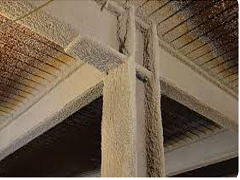REFRACTORY, FIREPROOFING & INSULATION SERVICES
Overview
We provide Lump-Sum-Turnkey
Refractories should have stable volume at high temperature and the
residual expansion and contraction should be
small. Heat capacity, thermal expansion coefficient, thermal conductivity and other thermal properties
should meet
the requirements. Refractories should have neat appearance and accurate shape and size.
Fireproofing is the process of making a material or structure
fire-resistant. This can be done by applying a
fire-resistant material, such as mortar, cement, or fireproof paint. Fireproofing is often used on steel
structures
and concrete to make them more resistant to fire.
Insulation in your home provides resistance to heat flow and
lowers your heating and cooling costs. Properly
insulating your home not only reduces heating and cooling costs, but also improves comfort.
The most common types of materials used for loose-fill insulation include cellulose, fiberglass, and mineral (rock
or slag) wool. All of these materials are produced using recycled waste materials.


